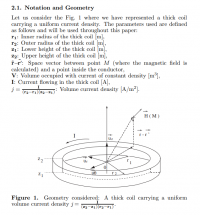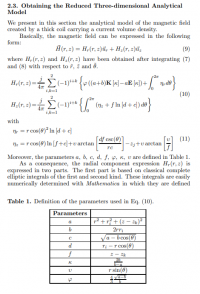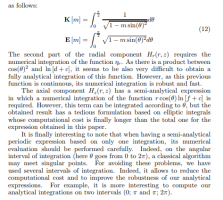TheEngineer
New member
- Joined
- May 16, 2022
- Messages
- 6
[math]\sum_{i, k = 1}^2 x = \sum_{i = 1}^2 \sum_{k = 1}^2 x[/math]Hello guys!
I hope you can help me with the following problem.
I need to work out how to implement the following equations in Matlab.
The most basic question I have regarding the equations is: What do the two variables below the sigma mean?
Thank you in advance
View attachment 32749
Is that an engineering convention for nested loops?[math]\sum_{i, k = 1}^2 x = \sum_{i = 1}^2 \sum_{k = 1}^2 x[/math]
Nope ........... not according to my class-notes or books.Is that an engineering convention for nested loops?
I don't know about any specific Mathematical conventions but I've seen it all over both my Math and Physics texts.Is that an engineering convention for nested loops?
I must've been reading the wrong kind of text. I interpreted as one sum i.e. i=k=1 and i=k=2, and neglect i=1,k=2 and i=2,k=1. I haven't seen it written like that probably because I don't recall ever having beyond 2 loops notationally. Admittedly, it's more convenient to write for larger index counts.I don't know about any specific Mathematical conventions but I've seen it all over both my Math and Physics texts.
-Dan
In Math I typically see things like [math]\sum_{j \in J} f(j)[/math]and such. Much nicer than having to write the limits.I must've been reading the wrong kind of text. I interpreted as one sum i.e. i=k=1 and i=k=2, and neglect i=1,k=2 and i=2,k=1. I haven't seen it written like that probably because I don't recall ever having beyond 2 loops notationally. Admittedly, it's more convenient to write for larger index counts.
[math]\sum_{k_1,\dots,k_n}f(k_1,\dots,k_n)[/math]Learned something new. ?
Wikipedia shows sums like that, and others, including this:In Math I typically see things like [math]\sum_{j \in J} f(j)[/math]and such. Much nicer than having to write the limits.
-Dan


You need to provide more context to the equations. Right now it's just an alphabet soup.Does anybody have an idea how i could implement the equations in MatLab?
I basically want to calculate the magnetic field strength in various points in space (defined by r and z).You need to provide more context to the equations. Right now it's just an alphabet soup.




To me it looks like,Hello guys!
I hope you can help me with the following problem.
I need to work out how to implement the following equations in Matlab.
The most basic question I have regarding the equations is: What do the two variables below the sigma mean?
Thank you in advance
View attachment 32749
Thanks for the reply.- and rest of the expression is independent of i or j
- and the result of the summation will be Hr = 0 = Hz.
